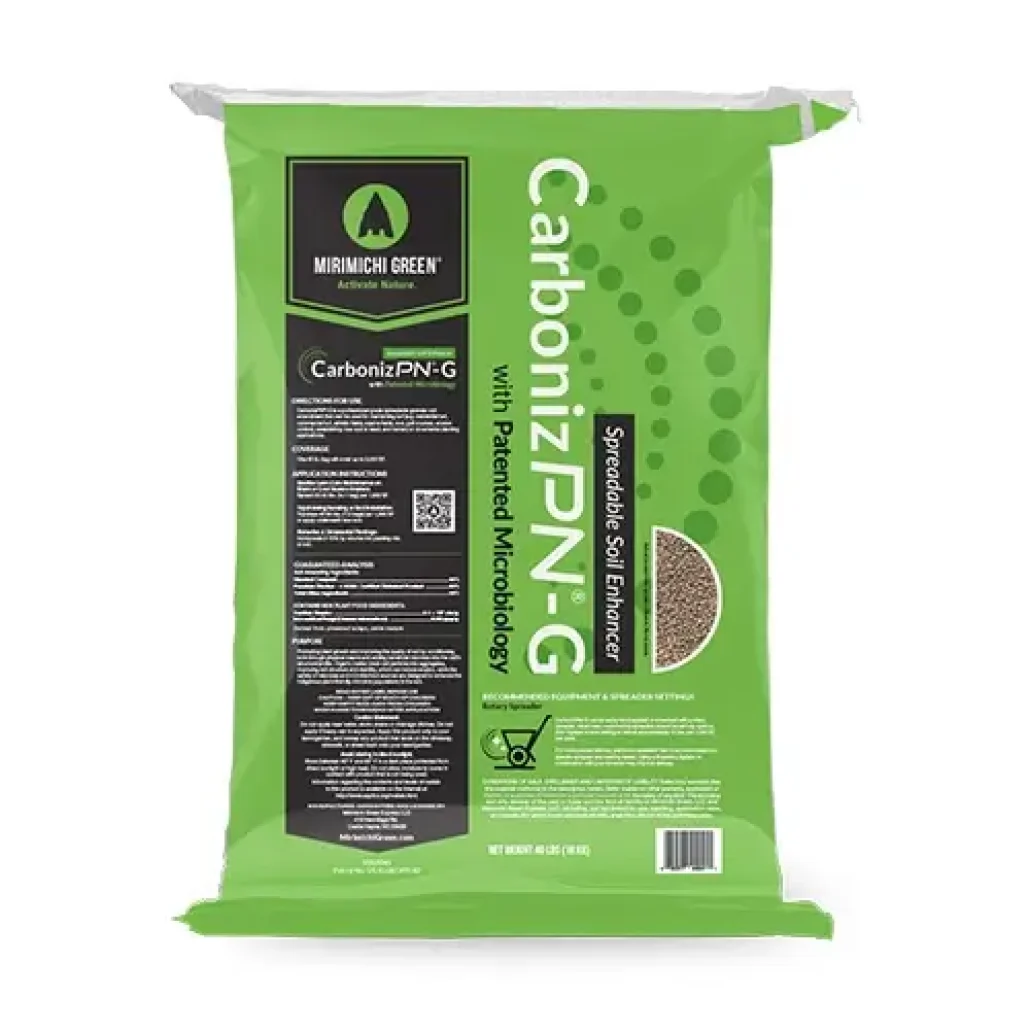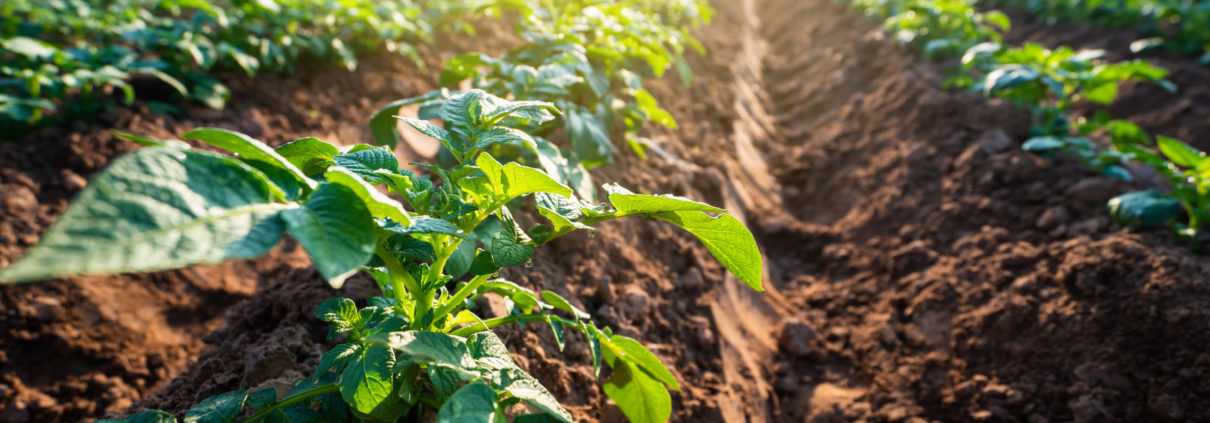
Home > Mirimichi Green Learning Center > Blog
Mirimichi Green Blog
Gather ideas and inspiration for growing your dream landscape. Get the latest tips, be updated on Mirimichi Green affairs, and learn more about our products here in Mirimichi Green Blog!
Ecolawn Applicator: A conversation with Daniel Coté
Superintendent Shannon Easter Shares Project Overview at Broken Sound Club Using Mirimichi Green
When to use a soil amendment versus fertilizer?
Mirimichi Green Launches Organic Granular Fertilizer 4-4-4
Peat Alternative During Shortage And Beyond
Lawn Winterization: Tips for Healthier, Greener Turf Next Spring
3 Alternatives to Roundup for the Landscape Professional
New Mirimichi Green Packaging
COVID-19 Status
Mirimichi Green Invests In New Manufacturing Equipment
Mirimichi Green Introduces Soluble Microbial Powder Into Product Offering
Mirimichi Green Sales Team Expands To The West Coast
Mirimichi Green Sales Personnel Expands
Mirimichi Green Announces Carbon In All Liquid Products
Mirimichi Green Adds New Hires To Team
Get Rid Of Bugs With Mirimichi Green Pest Control
Spring Tips For Sod And Topdressing Applications
US Equestrian Federation Announces Mirimichi Green as an Official Sponsor
Golf Course Industry – Injecting Different Theories
Mirimichi Green Introduces Pest Control Product
How To Keep A Christmas Tree Fresh And Green
Urban Sustainability Is Growing
Simple Steps to Control Erosion On Project Sites
High Nitrogen Poses Risk To Environment
Successful Turf Management and Disease Control Methods
Launch of CarbonizPN DJ Fine Grade
Help Customers Avoid Soil Erosion and Runoff
Fall Is The Best Time To Improve The Soil
Post-Hurricane Harvey Insecticide Aerial Spray
Mirimichi Green Receives NCMEP Leadership Award
Top 8 Plants That Repel Bugs and Mosquitoes
Top 6 Ornamentals To Include In Fall Landscapes
Shannon Easter To Speak At 2017 Distinguished Ideas Summit
6 Factors To Keep In Mind About Artificial Turf Fields
The Top Problems And Solutions For Soil Compaction
Dog Spots Destroying Your Grass? Here’s What to Do.
How to make the best choice between sod, seed or hydroseed
New Reviews About Outstanding Turf At TIEC
How to Choose the Right Soil for You
The Top 6 Most Common Landscaping Mistakes
The Top 8 Myths About Gardening
Growing Plants That Will Help Attract Wildlife To Your Garden
How To Help Your Plants Fight The Stresses of Summer
5 Ways To Minimize Your Weed Growth
You Need To Know The Importance Of Organic Soil Matter
Top 10 Beautiful, Sustainable, and Eco-Friendly Landscapes
How To Know When To Aerate Your Lawn
5 Proven Ways to Save Water in Your Garden
Transforming Your Landscape to be Healthy and Sustainable
Mirimichi Green Announces Inaugural Sustainable Program Member Award
Singapore Open 2017 Guest Speaker
Mirimichi Green Tackles College Stadium
Mirimichi Green Goes International
Mirimichi Green Launches New Product
Mirimichi Green Personnel Expands
Mirimichi Green Makes Donation To The City of North Las Vegas
Mirimichi Green Saving Lawns in California.
Mirimichi goes to Congress
Mirimichi Green joins in the action at Tree Planting in Louisville KY
The Best Fall Overseeding Tips for a Thicker, Greener Lawn
The Best Fall Overseeding Tips for a Thicker, Greener Lawn
If your lawn looks patchy, thin, or tired after summer, fall is the perfect time to bring it back to life. Overseeding and topdressing in the fall set the stage for a lush, healthy lawn that thrives through winter and bounces back strong in spring.
At Mirimichi Green, we’ve developed a proven fall program that combines overseeding with organic soil enhancement, giving you faster germination, stronger roots, and long-lasting results.

Why Fall is the Best Time to Overseed Your Lawn
Many homeowners wonder: Should I overseed in spring or fall? The answer is almost always fall—and here’s why:
-
Cooler nights, mild days → Seeds germinate faster and experience less heat stress.
-
Better moisture retention → Fall soil naturally holds more water, improving seed survival.
-
Nourishes dormant grass → Organic, carbon-rich topdressing strengthens existing turf for spring.
-
Boosts soil biology → A healthy soil environment encourages deeper roots and long-term turf resilience.
Step-by-Step Fall Overseeding Guide
Follow these overseeding and topdressing steps to achieve the best results:
Step 1: Aerate and Seed
Loosen compacted soil and spread fresh cool-season grass seed in bare or thinning areas.
Step 2: Topdress with CarbonizPN® or CarbonizPN®-G
Apply 20–40 lbs per 1,000 sq. ft. of a carbon-rich soil enhancer. This improves water absorption, boosts microbial activity, and creates the perfect bed for new seed.
Step 3: Water Thoroughly
Keep the soil consistently moist to speed up germination.
Step 4 (Pro Tip): Spray with a Release Liquid Fertilizer
For quicker germination and stronger root development, apply 1–2 gallons per acre of Release 901C, Release 202, or Release Zero.
Recommended Product Application Rates
-
CarbonizPN® / CarbonizPN®-G:
-
Maintenance Rate → 20 lbs per 1,000 sq. ft.
-
Preferred Rate → 40 lbs per 1,000 sq. ft.
-
-
A Release Liquid Fertilizer:
-
Standard → 2–7 oz per 1,000 sq. ft.
-
Alternative → 3.4–6.8 oz per acre (depending on soil type & turf condition)
-
Get Started with Fall Lawn Care Today
Don’t wait until spring to fix thin grass or bare patches. By overseeding and topdressing in the fall, you’ll create a thicker, healthier, and more resilient lawn.
Navigating Fertilizer Tariffs: Smart Strategies for Rising Costs
Navigating Rising Costs: Ways to Deal with US Tariffs on Agronomic Inputs
Farmers, landscapers, and turf managers across America are feeling the squeeze. Fertilizers, pesticides, and other agronomic inputs—essential materials that help crops grow and landscapes thrive—are becoming more expensive due to increasing US tariffs. These trade policies affecting imports from Canada, Mexico, and China are creating ripple effects throughout the agricultural and landscaping industries, forcing professionals to adapt quickly to maintain their bottom line.
The cost increases aren’t minor. When the government places fertilizer tariffs on imported fertilizers, the price tag jumps significantly for everyone down the supply chain. Golf course superintendents face higher maintenance costs. Municipal parks departments stretch already tight budgets. Commercial landscapers must reconsider their pricing structures. The financial pressure is real and immediate.
How can those relying on these essential inputs protect their operations from rapidly rising costs? This article explores practical strategies to navigate the challenges of fertilizer tariffs while maintaining quality and productivity.
Key Takeaways
- Recent tariffs have significantly increased costs for imported fertilizers and pesticides, directly impacting agricultural and landscaping operations across the US.
- Implementing strategic purchasing practices, exploring domestic alternatives, and adopting efficient application methods can substantially reduce the financial impact of these tariffs.
- Carbon-based and sustainable inputs from American manufacturers like Mirimichi Green offer viable alternatives that remain unaffected by international tariff fluctuations while providing environmental benefits.
- Developing supply chain resilience through diversification and embracing domestic innovations provides long-term protection against unpredictable trade policies.
Understanding the Impact of Tariffs on Fertilizer and Pesticide Costs
What are Tariffs and Why are They Being Applied?
Tariffs function as taxes on imported goods, designed to achieve specific economic or political objectives. The US government has implemented these measures on various agricultural inputs primarily to address trade imbalances with countries like Canada, China, and Mexico. When another country imposes restrictions on American goods, the US often responds with reciprocal tariffs calculated as a percentage of the product’s value. For fertilizers specifically, these rates typically range from 10% to over 30% depending on the country of origin and the specific product.
The results are straightforward: higher prices for imported materials that many American agricultural and landscaping operations depend on. While intended to protect domestic industries, these measures create immediate financial challenges for end users who have built their operations around these imported inputs.
“Trade policies directly affect input costs for nearly every agricultural and landscaping operation in America. When tariffs increase by 20%, that cost inevitably flows downstream to the end user.” – Dr. David Kohl, Professor Emeritus of Agricultural Finance at Virginia Tech
Which Agronomic Inputs Are Most Affected?
Not all fertilizers face the same tariff impact. Potash fertilizers are particularly vulnerable since approximately 90% of US potash comes from Canadian sources. A tariff on Canadian imports directly translates to higher costs for this essential nutrient. Nitrogen fertilizers experience more moderate effects because nearly 60% is produced domestically, providing some buffer against international price fluctuations. Phosphorus-based products fall somewhere in between.
| Fertilizer Type | Import Dependency | Tariff Impact | Primary Source Countries |
|---|---|---|---|
| Potash | High (90%) | Severe | Canada |
| Nitrogen | Moderate (40%) | Moderate | Various |
| Phosphorus | Medium-High | Significant | China, Morocco |
| Specialty Inputs | Variable | High | China, Europe |
Beyond these primary nutrients, tariffs are beginning to affect specialized pesticides, growth regulators, and other chemical inputs sourced internationally. Sports field managers, golf courses, and landscape contractors often rely on these specialized products that may have limited domestic alternatives.
What happens when these essential materials suddenly cost 10-30% more?
The Direct Financial Impact on Businesses
The mathematics is simple but painful. When tariffs increase the cost of potash by 20%, that cost travels downstream. Distributors adjust their pricing to maintain margins. Retailers do the same. Eventually, the landscape contractor, sports turf manager, or municipal agency faces significantly higher costs for the same products they’ve always used.
For a mid-sized landscaping operation maintaining multiple commercial properties, this could mean thousands of dollars in additional expenses annually. A golf course might see its agronomic input budget increase by 15-25% almost overnight. These aren’t theoretical numbers—they represent real budget challenges facing professionals today.
Strategies for Mitigating Tariff-Driven Cost Increases
Proactive Purchasing and Inventory Management
Smart purchasing decisions can significantly offset tariff impacts. Creating a comprehensive annual input purchasing plan allows businesses to strategically time their buys. Many suppliers offer early-order discounts months before the application season begins. By committing to purchases during these windows, landscapers and turf managers can lock in prices before seasonal demand drives them higher.
Steps to optimize purchasing strategy:
- Create a comprehensive annual input purchasing plan
- Take advantage of early-order discounts
- Invest in adequate storage capacity for bulk purchases
- Monitor announcements about upcoming tariff changes
- Utilize industry associations for market intelligence
Storage capacity becomes a valuable asset in this environment. Organizations with adequate facilities to safely store fertilizers and pesticides can purchase in bulk during price dips. Some operations find it worthwhile to invest in additional storage infrastructure, recognizing that the savings on bulk purchasing outweigh the initial investment costs.
Market intelligence also plays a crucial role. Monitoring announcements from the Office of the US Trade Representative about upcoming tariff changes provides valuable lead time to make purchases before new rates take effect. Industry associations frequently share this information with members, making them valuable resources during uncertain times.
Exploring Alternative and Sustainable Inputs
The tariff situation has accelerated interest in domestic alternatives to traditional imported synthetic inputs. Biological and carbon-based soil amendments and liquid fertilizers represent exactly the kind of domestic alternative that provides insulation from tariff fluctuations.
“Carbon-based inputs represent not just a response to tariff challenges, but a fundamental improvement in how we approach soil fertility. They build resilience both economically and agronomically.” – Dr. Rattan Lal, World Food Prize Laureate and soil scientist
Mirimichi Green’s carbon-based soil amendments and liquid fertilizers represent exactly the kind of domestic alternative that provides insulation from tariff fluctuations. These products harness the power of carbon technology to improve soil health while delivering nutrients efficiently. Because they’re produced entirely within the US, they bypass many of the supply chain vulnerabilities associated with conventional fertilizers.
Users report that these carbon-based alternatives not only stabilize input costs but also improve overall soil health over time, potentially reducing the total quantity of inputs needed in subsequent seasons. This creates a double benefit: immediate cost stability and long-term input reduction.
Have you considered how carbon-based alternatives might fit into your agronomic program?
Optimizing Application and Nutrient Management
Precision application techniques transform from best practices to economic necessities when input costs rise. Soil testing becomes essential rather than optional, ensuring that applications target actual deficiencies rather than following general recommendations.
• Soil testing to target actual deficiencies
• GPS-guided application equipment to reduce overlap and waste
• Split applications to improve nutrient uptake efficiency
• Cultural practices like aeration before fertilizer applications
• Overseeding with newer, more efficient grass varieties
GPS-guided application equipment can reduce overlap and waste by 5-15% compared to traditional methods. For large properties, this precision translates directly to cost savings. Split applications—applying smaller amounts more frequently—can improve nutrient uptake efficiency while reducing leaching and runoff, stretching each dollar further.
Cultural practices like aeration before fertilizer applications improve soil penetration and efficiency. Overseeding with newer, more efficient grass varieties can reduce input requirements while maintaining quality. These integrated approaches help maintain performance standards even with reduced input quantities.
Long-Term Considerations and Supply Chain Resilience
The Importance of Supply Chain Diversification
Relying exclusively on products from countries subject to tariffs creates significant vulnerability. Forward-thinking professionals are actively diversifying their supply sources, building relationships with multiple suppliers and experimenting with products from different origins.
Supply chain diversification provides inherent advantages in this environment. Mirimichi Green exemplifies this benefit, maintaining stable pricing and availability while imported alternatives fluctuate with each trade policy change. Their manufacturing facilities in North Carolina remain unaffected by international shipping delays or border complications.
This domestic focus means landscape professionals using Mirimichi Green products experience fewer supply interruptions and more predictable costs—valuable advantages when planning seasonal operations and bidding on long-term contracts.
The Role of Domestic Production and Innovation
The tariff situation has stimulated innovation within the US agricultural input sector. New technologies are emerging that reduce reliance on imported raw materials.
Emerging technologies reducing reliance on imported materials:
• Enzyme-based soil treatments
• Advanced organic amendments
• Precision foliar applications
• Carbon-soil technology
Companies like Mirimichi Green are at the forefront of this innovation wave, developing carbon-soil technology that improves nutrient holding capacity and reduces leaching. Their research shows that optimized soil biology can maintain plant health with significantly lower conventional input rates—exactly the approach needed when those inputs become more expensive.
This domestic innovation ecosystem creates resilience against international trade disruptions while advancing environmental sustainability. The result is a win-win: reduced vulnerability to tariffs and improved ecological outcomes.
Potential for Government Programs or Policy Changes
The agricultural sector has historically received support during market disruptions, and the current tariff situation may trigger similar responses. The Market Facilitation Program (MFP) previously provided direct payments to farmers affected by trade disputes. Though not currently active, similar programs could emerge if tariff impacts intensify.
Industry advocacy groups continue pressing for tariff exemptions on critical agricultural inputs. Their messaging emphasizes food security and economic stability, which resonate with policymakers. While policy changes aren’t guaranteed, they represent another potential avenue for relief.
Trade negotiations remain fluid, with agreements constantly being renegotiated. What seems permanent today may change with the next round of international discussions. This uncertainty reinforces the value of building operational flexibility and reduced dependence on tariff-affected inputs.
“The most successful operations view trade disruptions not as obstacles but as catalysts for innovation. Those who adapt fastest to finding domestic alternatives often emerge stronger.” – Chuck Carr, Former President of the National Association of Landscape Professionals
Frequently Asked Questions (FAQs)
Which countries’ fertilizer imports are most affected by US tariffs?
Canadian potash faces significant tariffs, impacting a crucial source of this essential nutrient for US agriculture. China, which supplies various specialty fertilizers and agricultural chemicals, has also been targeted with substantial tariffs ranging from 15-25% on many products. Russian fertilizer imports face similar restrictions. These countries represent major sources of agricultural inputs for the US market, making the tariff impact widespread and significant.
Will tariffs directly increase the price of all fertilizers?
Not all fertilizers will see the same price increases. Products with high domestic production capacity, like some nitrogen fertilizers, may experience more modest price changes. However, even domestically produced fertilizers often adjust pricing upward when competing imports become more expensive. The relationship between tariffs and pricing is complex, with market factors, energy costs, and seasonal demand also influencing final prices. Generally, products with high import dependence from tariffed countries will see the most direct and immediate price increases.
Are there specific types of fertilizers or pesticides that are exempt from these tariffs?
Some specialty products used for non-agricultural purposes may qualify for exemptions. Additionally, products from countries with special trade agreements may face reduced or zero tariffs. The US Trade Representative occasionally issues targeted exemptions for critical materials without domestic alternatives. However, these exemptions are limited and often temporary. Working with knowledgeable suppliers who understand tariff classifications can help identify potentially exempt products, though these represent a small percentage of the overall agronomic input market.
How can I find out the specific tariff rates for the products I use?
The most reliable source for current tariff information is the Harmonized Tariff Schedule published by the US International Trade Commission. This comprehensive document classifies all imported goods and their corresponding duty rates. For more user-friendly information, industry associations like the Fertilizer Institute or the American Seed Trade Association often provide summaries relevant to their sectors. Many agricultural input suppliers also maintain updated information about tariff impacts on specific products they distribute, making them valuable resources for current information.
What resources are available to help businesses navigate these tariffs?
Several resources exist to help agricultural professionals manage tariff challenges. Agricultural extension services through land-grant universities offer guidance on input substitution and efficiency. Trade associations provide policy updates and management recommendations. The USDA’s Farm Service Agency can connect eligible operations with assistance programs. Consultants specializing in agricultural economics may offer tailored strategies for larger operations. Additionally, suppliers of domestic alternatives like Mirimichi Green often provide technical support to help customers transition to products less affected by international trade fluctuations.
Can switching to alternative inputs like Mirimichi Green products really save money?
Many operations report meaningful cost savings after transitioning to domestic alternatives like Mirimichi Green’s carbon-based products. The savings come from multiple factors: stable pricing unaffected by tariff fluctuations, improved efficiency requiring less product over time, reduced leaching and runoff meaning fewer reapplications, and enhanced soil health leading to stronger plants with better stress resistance. While the initial price per unit may sometimes be comparable to conventional products, the total program cost often decreases over time as soil health improves. Users typically report the most significant savings in the second and third years after making the switch.
Conclusion
The impact of tariffs on fertilizers and pesticides presents real challenges for American agriculture and landscaping professionals. Rising input costs squeeze margins and complicate long-term planning. However, proactive strategies can significantly mitigate these effects.
Smart purchasing timing, storage capacity improvements, and precision application technologies represent immediate solutions accessible to most operations. Exploring domestic alternatives, particularly carbon-based products from companies like Mirimichi Green, offers both short-term price stability and long-term agronomic benefits. Building diverse supply chains and staying informed about policy developments creates additional resilience.
While the trade environment remains unpredictable, the tools to navigate it successfully exist today. By combining tactical purchasing decisions with strategic shifts toward domestic and sustainable alternatives, professionals can maintain productivity and profitability despite tariff pressures. These adaptations not only address immediate economic challenges but position operations for greater sustainability and resilience in the future.
Replanting in Winter: Preparing Your Landscape for Spring
As winter settles in, many landscapers and gardeners put their tools down, thinking that landscaping tasks are on hold until warmer weather returns. However, winter can be an ideal time to prepare for the upcoming spring season, especially when it comes to replanting flowers, bulbs, plants, and shrubs. Though it may seem counterintuitive, certain replanting practices in the colder months can help ensure a vibrant and healthy garden when the days grow longer.
Why Replant in Winter?
The main reason for replanting in winter is to give plants a head start for spring. While many flowers and plants are in dormancy during the colder months, they are still alive, and their roots are still active—albeit slowly. Planting during winter, especially late winter or early spring, allows them time to acclimate to their new environment before the busy growing season begins. When the warmer months arrive, your plants will notice the climate changing and will be ready to thrive.
Here are a few reasons why winter replanting can benefit your garden:
- Dormant Plants Are Less Stressful to Transplant: When plants are dormant, they are less likely to experience transplant shock. The colder temperatures slow down their metabolic processes, meaning the plant will not have to support as much top growth. This allows the root system to focus on becoming established in its new location.
- Better Moisture Retention: Winter planting ensures that the soil is generally moist from seasonal rains or snowmelt, which is perfect for roots to take hold. As long as the soil is not frozen, moisture is available for your plants to use during their early stages of growth.
- Early Growth in Spring: Plants that are put in the ground during winter or late winter have an opportunity to start growing as soon as the soil thaws, giving them a head start over plants that are sown or transplanted later in the season.
Best Plants to Replant in Winter
Several species are well-suited for planting in the colder months. Some of the best choices for winter replanting include:
- Perennials: Many perennials, like hostas, daylilies, and coneflowers, are hardy enough to be planted in winter. These plants can be dormant during the cold months, but once temperatures warm up in spring, they will bloom with vigor.
- Shrubs: Winter is an excellent time to plant hardy shrubs like holly, boxwood, and evergreen varieties such as juniper and pine. These plants tend to handle transplanting well when dormant.
- Trees: Certain deciduous trees, like maples, oaks, and birches, can also be planted during the winter. These trees benefit from winter planting as it allows them to develop a strong root system before spring’s growth spurt.
- Bulbs: Planting bulbs like daffodils, tulips, and crocuses in late fall or early winter is a common practice to ensure they bloom beautifully in the spring. Their deep dormancy period makes them ideal for winter planting.
- Evergreens: In areas with mild winters, evergreens like pines, spruces, and firs are excellent candidates for planting. They continue to grow through the winter months, though more slowly, and thrive when the temperatures rise in spring.
How to Properly Replant in Winter
When replanting during the colder months, there are a few essential tips to keep in mind to maximize the success of your landscaping efforts:
- Choose the Right Time: Winter replanting should take place when the ground is not frozen but still cool. Late winter, just before spring’s arrival, is usually the ideal time. This is when the soil is still damp from snowmelt but not overly wet, providing a great opportunity for root development. This will vary based on location.
- Prepare the Soil: Even in winter, preparing your soil is crucial. Amend the soil with compost or soil amendment like CarbonizPN to ensure good drainage and nutrients at the roots. Soil that is too heavy or compacted can be a challenge for new roots to grow.
- Watering Considerations: While winter plants do not require frequent watering, it’s still important to check soil moisture levels periodically. If the weather is unusually dry, you may need to water plants, especially when temperatures are mild. However, avoid overwatering, as soggy soil can cause root rot.
- Mulch or Straw for Protection: Adding a layer of mulch or pine straw after planting helps insulate the soil and protect the roots from extreme cold. Mulch can also prevent soil erosion and moisture loss during the winter months.
- Avoid Frost Damage: In areas with extreme cold, make sure your plants are protected from frost. Cover sensitive plants with frost cloths or burlap, especially if a hard frost is predicted. If you plant during winter, be ready to shield your plants from unexpected temperature drops.
- Choose the Right Location: Pay attention to where you plant. Ensure your plants are well-suited for the growing conditions of your garden—whether that means a sunny spot, partial shade, or full shade. This will help them become established faster in the spring.
Common Challenges and How to Overcome Them
While winter replanting has many benefits, there are a few challenges to keep in mind:
- Extreme Cold: If the temperatures plummet unexpectedly, plants that have been recently replanted may suffer. One way to mitigate this risk is to plant cold-hardy varieties and to use frost protection measures. Be sure to check the forecast regularly.
- Soil Freeze: If the ground freezes hard, you won’t be able to plant. Waiting for a thaw is essential, as frozen soil doesn’t allow roots to establish.
- Lack of Sunlight: While winter provides plenty of moisture, the lack of sunlight can sometimes stunt the growth of newly planted perennials. Choose varieties that can tolerate lower light levels during their early stages.
Conclusion
Replanting flowers, plants, bulbs, and shrubs in the winter isn’t just about surviving the cold—it’s about getting a jump on spring’s growth. By carefully choosing the right plants, preparing the soil, and taking appropriate protective measures, you can ensure that your landscape and garden will flourish when the warmth of spring returns. With thoughtful planning, winter replanting can be a key practice for a lush, vibrant landscape that’s ready to thrive as soon as the days lengthen.
Remediating Salt Damage to Lawns from Winter Deicing Applications
Winter safety often depends on the use of deicing products, such as rock salt (sodium chloride), on roads, sidewalks, and driveways. While effective for melting ice, these products can wreak havoc on the surrounding soil and vegetation. Over time, repeated salt applications introduce high concentrations of sodium and chloride ions into the environment, leading to soil degradation, plant stress, and long-term damage to landscapes.
How Deicing Salts Damage Soil and Plants
Sodium ions from deicing salts disperse soil particles, destroying its structure and reducing permeability. This compaction limits water infiltration and root growth, creating an inhospitable environment for plants. Chloride ions, on the other hand, accumulate in the root zone, disrupting nutrient absorption and causing physiological drought—when water is present in the soil but unavailable to plants. The result is weakened vegetation, stunted growth, and, in severe cases, plant death.
The impact is especially pronounced in areas adjacent to roads, parking lots, and walkways, where salt runoff concentrates in the soil. As a result, landscapers and property managers face a growing need for solutions to counteract these effects and restore soil health.
Restoring Soil Health with CarbonizPN
Mirimichi Green’s CarbonizPN offers a comprehensive solution for remediating salt-affected soils. This powerful blend of biochar and mature compost is specifically designed to address the dual challenges of soil compaction and salt toxicity:
- Biochar for Salt Sequestration: CarbonizPN’s biochar component binds and immobilizes sodium and chloride ions, reducing their concentration in the soil. This minimizes their harmful effects and prevents further damage to plant roots.
- Compost for Soil Regeneration: The mature compost provides organic matter that stimulates beneficial microbial activity, enhances nutrient cycling, and encourages root development. These processes support the recovery of soil structure and fertility, creating an environment conducive to healthy plant growth.
- Enhanced Soil Properties: CarbonizPN improves water retention and aeration, alleviating the compaction caused by sodium and promoting better root penetration.
This dual-action approach is ideal for restoring damaged lawns, landscapes, and green spaces adjacent to high-salt-application areas.
Application Guidelines
Mirimichi Green recommends the following application rates for CarbonizPN, depending on the severity of salt damage:
- Supplemental: 20 pounds per 1,000 square feet
- Standard: 30 pounds per 1,000 square feet
- Premium: 60 to 80 pounds per 1,000 square feet
For enhanced results, consider pairing CarbonizPN with Mirimichi Green Release products (Release 901C, 202, or Zero) to accelerate germination and improve root mass development. Recommended rates for Release products range from 2 to 8 ounces per 1,000 square feet, based on the desired level of enhancement.
Proactive Salt Management
To prevent soil degradation and minimize the need for remediation, landscapers should consider proactive strategies, such as:
- Using deicing alternatives like calcium magnesium acetate or potassium chloride, which are less harmful to soil and plants.
- Implementing barriers or drainage solutions to reduce salt runoff into adjacent green spaces.
By integrating CarbonizPN into your maintenance practices, you can restore salt-damaged soils, ensure healthier landscapes, and protect long-term vegetation vitality. Contact Mirimichi Green today to learn how our products can help you mitigate the effects of winter deicing salts.
Understanding Soil Organic Matter and Carbon Content
Soil organic matter (SOM) is a crucial component of healthy soil, playing a significant role in plant health care (PHC) and environmental sustainability. Central to SOM is carbon, a fundamental element that impacts soil structure, fertility, and the ability to support plant growth. This article delves into the components of soil organic matter, the role of carbon, and how understanding these elements can enhance soil management practices.
What is Soil Organic Matter?
Soil organic matter consists of a complex mixture of organic compounds, including decomposing plant and animal residues, living soil organisms, and substances synthesized by soil microbes. It can be broadly divided into three categories:
- Fresh Residues: Recently added plant and animal material that is in the initial stages of decomposition.
- Active Fraction: Organic matter that is in various stages of decomposition, providing a steady release of nutrients.
- Humus: Highly decomposed organic material that is stable and contributes to soil structure and water-holding capacity.
The Role of Carbon in Soil Organic Matter
Carbon is the backbone of soil organic matter. It enters the soil through plant photosynthesis, where carbon dioxide (CO₂) is converted into organic compounds. These compounds are then deposited into the soil through plant residues, root exudates, and microbial activity. Here are some key roles carbon plays in soil organic matter:
- Soil Structure: Carbon-rich organic matter improves soil structure by promoting the formation of soil aggregates, enhancing soil porosity and aeration, facilitating root growth and water infiltration.
- Nutrient Supply: As organic matter decomposes, it releases essential nutrients like nitrogen, phosphorus, and sulfur, making them available for plant uptake.
- Water Retention: Organic matter increases the soil’s ability to retain water, reducing the need for irrigation and improving drought resilience.
- Microbial Activity: Carbon serves as an energy source for soil microbes, which play a vital role in nutrient cycling and the decomposition of organic matter.
Measuring Soil Carbon Content
Understanding the carbon content of your soil can inform better soil management practices. Soil carbon content is typically measured in two forms:
- Total Organic Carbon (TOC): Represents the total amount of carbon in organic compounds within the soil.
- Active Carbon: Refers to the portion of organic carbon that is readily available for microbial activity and nutrient cycling.
Soil tests can determine the levels of TOC and active carbon, providing insights into soil health and fertility.
The Stability Advantage of Mirimichi Green Soil Amendments
Mirimichi Green soil amendments are formulated with highly stable and mature organic matter that functions similarly to humus. Unlike traditional composts, which often contain a higher proportion of active and less stable organic fractions, the organic matter in Mirimichi Green products remains stable, enhancing long-term soil structure, water retention, and nutrient cycling. This humus-like stability allows it to perform consistently over time, providing benefits that surpass typical compost applications by reducing nutrient loss and supporting resilient, healthy plants.
Enhancing Soil Carbon Content for Plant Health Care (PHC)
Increasing the carbon content in your soil can lead to healthier, more resilient plants. Here are some strategies to enhance soil carbon specifically for PHC:
- Aeration: Regularly aerating soil improves structure, allowing organic matter and carbon to penetrate deeper.
- Topdressing: Applying a thin layer of compost or organic matter to the soil surface can gradually increase soil carbon content.
- Proper Mowing Practices: Leaving grass clippings on the soil after mowing (grasscycling) adds organic matter and nutrients back into the soil.
- Organic Fertilizers: Using organic fertilizers instead of synthetic ones can increase soil organic matter and carbon content over time.
- Minimizing Chemical Use: Reducing the use of chemical pesticides and herbicides helps maintain a healthy soil microbiome, which is essential for organic matter decomposition and carbon cycling.
- Mulching: Applying mulch around trees and flower beds helps retain soil moisture, regulate temperature, and adds organic matter as it decomposes.
- Overseeding: Planting additional seeds can improve plant density, leading to increased organic matter input from roots and plant residues.
Why it Matters
Understanding the role of carbon in soil organic matter is essential for effective plant health care (PHC). By focusing on increasing soil carbon through sustainable practices—and leveraging the stability benefits of Mirimichi Green soil amendments—we can enhance soil health, improve plant quality, and contribute to environmental sustainability. Whether maintaining a residential landscape or managing a larger green space, integrating strategies to boost soil carbon with mature, stable organic inputs can yield significant benefits for your plants and the broader environment.
Essential-G Discontinuation & Introduction of CarbonizPN-G: Your Questions Answered
Dear Mirimichi Green Community,
We have some important news to share: Essential-G is being discontinued and replaced by our new product, CarbonizPN-G. We understand that you may have questions about this change, so we’ve organized this announcement in a Frequently Asked Questions (FAQ) format to address your concerns and explain the benefits of CarbonizPN-G.
Why is Essential-G being discontinued?
Several factors led to this decision:
- Supply Chain Challenges: Essential-G included inputs like coffee grounds, which have become unreliable in terms of consistent supply and timely delivery. Additionally, manufacturing in Texas required shipping our core CarboMatrix raw ingredients back and forth across the country, increasing costs and logistical complexities.
- Customer Feedback: While Essential-G was well-regarded, we received feedback requesting a higher percentage of biochar and noting that the poultry manure component affected the product’s smell.
- Name Confusion: We received feedback that it wasn’t clear how the Essential-G product fit into our line of soil amendments, and we kept encountering questions about when applicators should select which product.
CarbonizPN-G addresses these and other challenges.
What is CarbonizPN-G?
CarbonizPN-G is the granular, spreadable form of our flagship soil amendment, CarbonizPN. It is designed to enhance soil health and provide long-lasting benefits for your landscape.
How does CarbonizPN-G address the issues with Essential-G?
- Higher Biochar Content: CarbonizPN-G contains nearly 50% biochar, providing more permanent carbon per application and improving soil structure and fertility.
- Improved Smell: Made from our premium compost blend without poultry litter, CarbonizPN-G has a pleasant, earthy smell that aligns with the quality you’ve come to expect from Mirimichi Green products.
- Beneficial Microbes: The product is inoculated with beneficial microbes from our ByoSpxtrum product, enhancing soil microbiology and promoting healthier plant growth.
How will this change affect product availability and pricing?
By producing CarbonizPN-G at our home plant in Clinton, NC, and granulating it regionally, we can:
- Ensure Consistent Supply: Reduce interruptions in product availability.
- Maintain Sustainable Costs: Lower production and shipping costs, keeping prices competitive. Pricing should be consistent with Essential-G and similar soil amendments, which were set to go up next year.
What are the benefits of switching to CarbonizPN-G?
- Enhanced Soil Health: Higher biochar content and beneficial microbes improve soil vitality.
- Same Application: The granular form is spreadable and convenient for maintenance routines and you can continue using the same programs you developed using Essential-G.
- Better Product Alignment: CarbonizPN-G will be our lead maintenance product, while CarbonizPN is positioned for installations and topdressing with mechanized equipment. We hope this alignment makes our product offerings easier to understand, sell, and use.
When will CarbonizPN-G be available?
We are currently accepting pre-orders, with deliveries expected to begin in January 2025.
What should I do if I have stocks of Essential-G?
You can continue to use Essential-G as you normally would. When you’re ready to reorder, we encourage you to try CarbonizPN-G and experience its enhanced benefits.
How can I place a pre-order or get more information?
Distributors can submit a purchase order like normal to order@mirimichigreen.com.
This product should already be included on your 2025 distributor price sheet along with the SKUs below. If you need an updated copy of the distributor price sheet or need help getting this new product set up in your computer system, please email order@mirimichigreen.com, and a member of our team will be happy to assist. We anticipate shipping in January 2025
Available Sizes
| Size | Product SKU | Barcode | Pack Out |
| 40 lb. bag | 11540 | 680577449411 | 50 bags per pallet |
| 1 yd. super sack | 115SS | 680577449558 | 2 super sacks per pallet |
Thank You for Your Support
We appreciate your trust and are confident that CarbonizPN-G will exceed your expectations. Your feedback has been instrumental in this development, and we look forward to continuing to serve your landscaping needs with improved and sustainable solutions.
Sincerely,
The Mirimichi Green Team
Questions about CarbonizPN-G
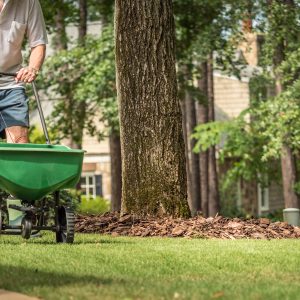
The Best Fall Overseeding Tips for a Thicker, Greener Lawn
The Best Fall Overseeding Tips for a Thicker, Greener Lawn If your lawn looks patchy, thin, or tired after summer,

Navigating Fertilizer Tariffs: Smart Strategies for Rising Costs
Navigating Rising Costs: Ways to Deal with US Tariffs on Agronomic Inputs Farmers, landscapers, and turf managers across America are
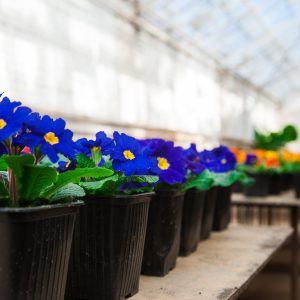
Replanting in Winter: Preparing Your Landscape for Spring
As winter settles in, many landscapers and gardeners put their tools down, thinking that landscaping tasks are on hold until

Remediating Salt Damage to Lawns from Winter Deicing Applications
Winter safety often depends on the use of deicing products, such as rock salt (sodium chloride), on roads, sidewalks, and
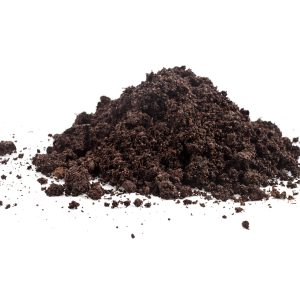
Understanding Soil Organic Matter and Carbon Content
Soil organic matter (SOM) is a crucial component of healthy soil, playing a significant role in plant health care (PHC)

Essential-G Discontinuation & Introduction of CarbonizPN-G: Your Questions Answered
Dear Mirimichi Green Community, We have some important news to share: Essential-G is being discontinued and replaced by our new

Remediating Salt in Soils Due to Hurricanes and Storm Surge
CarbonizPN: The Ultimate Solution for Hurricane-Induced Salt Damage When hurricanes hit, the resulting storm surge and wind-driven saltwater can wreak
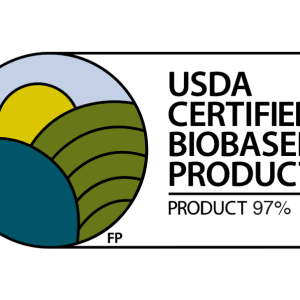
Understanding USDA Certified Biobased Products: What It Means and Why It Matters
In today’s world, more consumers are becoming conscious of the environmental impact of the products they use. This shift towards
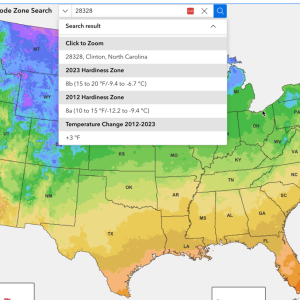
2024 USDA Hardiness Zone Changes
In November of 2023, the USDA updated its plant hardiness zone map for the first time since 2012 – not
